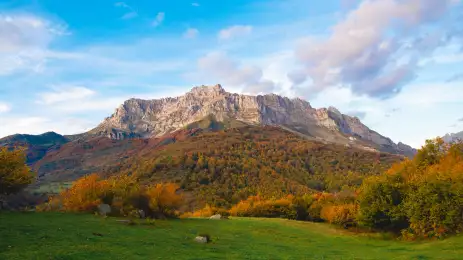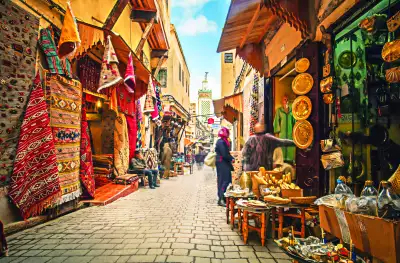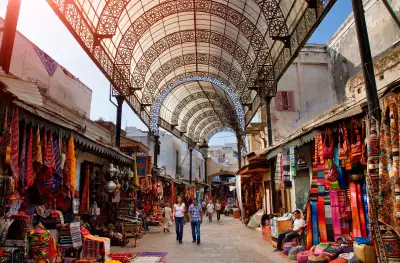When is the Best Time to Visit Spain? A Season-by-Season Guide

With nearly 3,000 hours of sunshine per year, Spain is a dream destination for sun-seekers and culture lovers.
This diverse country—home to snow-capped mountains, sun-drenched beaches, lush green valleys, and vibrant cities—offers different experiences depending on the time of year and region.
So, when is the best time to visit Spain? Let’s break it down season by season to help you plan the perfect trip.

Spring in Spain (March to May)
Best for: city breaks, cultural sightseeing, food tours, countryside escapes
Spring is often considered the ideal time to explore Spain, particularly if you're interested in soaking up its history, architecture, and natural landscapes without the heat or heavy crowds.
- Weather: average highs around 19°C (66°F), with cool evenings and occasional rain.
- Highlights: almond blossoms in Andalusia, patios in Córdoba, and lively Easter celebrations across the country.
- Top destinations: Madrid, Seville, Valencia, Córdoba, and the Balearic Islands.
Why go in spring? Cities are vibrant and uncrowded, the countryside is green and blooming, and it's comfortable enough to walk miles exploring historic neighbourhoods or hiking in national parks.

Summer in Spain (June to August)
Best for: beach holidays, island getaways, coastal road trips, festivals
Summer in Spain is peak tourist season, and for good reason. The Mediterranean and Atlantic coasts are buzzing with life, and the islands—Ibiza, Mallorca, and the Canaries—offer some of the best beach experiences in Europe.
- Weather: inland cities can soar past 35°C (95°F), while coastal areas stay slightly cooler.
- Highlights: La Tomatina (tomato throwing festival in August), San Fermín (Running of the Bulls in July), and countless music festivals.
- Top destinations: Costa Brava, Costa del Sol, Ibiza, Mallorca, San Sebastián, and Galicia for cooler weather.
Travel tip: avoid central cities like Madrid or Seville during July and August unless you’re prepared for extreme heat. Locals often leave for the coast, and you should too if you want a more relaxing experience.

Autumn in Spain (September to November)
Best for: wine tours, hiking, cultural festivals, fewer crowds
Autumn is a wonderful time to explore Spain, especially in September and October, when summer's heat gives way to mild, sunny days and cool evenings.
Weather: Temperatures range from 18–25°C (64–77°F), with low rainfall early in the season.
Highlights: Grape harvests in La Rioja, jazz festivals in Barcelona, and fewer tourists.
Top destinations: Granada, Barcelona, La Rioja, the Basque Country, and the Picos de Europa mountains.
Why visit in autumn? Spain’s cities and countryside are bathed in a golden glow, seasonal produce fills the markets, and the country feels both peaceful and alive.

Winter in Spain (December to February)
Best for: budget travel, ski holidays, cultural immersion, festive markets
While Spain is associated with the sun, winter brings a more laid-back, cosy charm, especially in southern regions like Andalusia, or in mountain villages where skiing is popular.
Weather: varies greatly. It can be chilly (5–15°C / 41–59°F) in most regions, especially at night. Snow is common in the Pyrenees and Sierra Nevada.
Highlights: Christmas markets, Three Kings Parade (January 6), skiing in the Pyrenees or Sierra Nevada.
Top destinations: Granada, Málaga, Madrid (for museums), and the Canary Islands (for winter sun).
Canary Islands tip: this is a great time to visit Tenerife, Gran Canaria, or Lanzarote if you want sunshine in the middle of winter without the summer crowds.
Regional climate differences to consider in Spain
Spain isn’t a one-climate country. Here’s how different regions vary:
- Southern Spain (Andalusia): very hot summers, mild winters. Great in spring and autumn.
- Northern Spain (Basque Country, Galicia): cooler, wetter, and greener. Summer is the best time to go.
- Central Spain (Madrid, Castilla-La Mancha): hot in summer, cold in winter. Best in spring and autumn.
- Eastern Spain (Valencia, Barcelona): Mediterranean climate—mild winters and hot summers.
- Canary Islands: subtropical climate—pleasant year-round.
Tips for planning a trip to Spain
- Avoid August in cities unless you're prepared for extreme heat and quieter city life—many locals go on vacation then.
- Book early for Easter (Semana Santa), summer beach holidays, and major festivals.
- Pack for the region and season. In winter, a warm coat is essential for northern and central Spain. In summer, lightweight clothes, sunscreen, and water are must-haves.
When is the best time for you to visit Spain?
| Travel goal | Best time to visit |
|---|---|
| Sightseeing | Spring (March to May) or Autumn (September to November) |
| Beach holiday | Summer (June to August) |
| Wine and food tours | Autumn (September to October) |
| Budget-friendly | Winter (December to February) |
| Festivals and events | Summer (June to August) and Holy Week (March/April) |
Ultimately, Spain is a year-round destination, but the best time to visit depends on your interests, itinerary, and tolerance for heat or cold. Plan wisely, and Spain will reward you with unforgettable experiences in every season.




